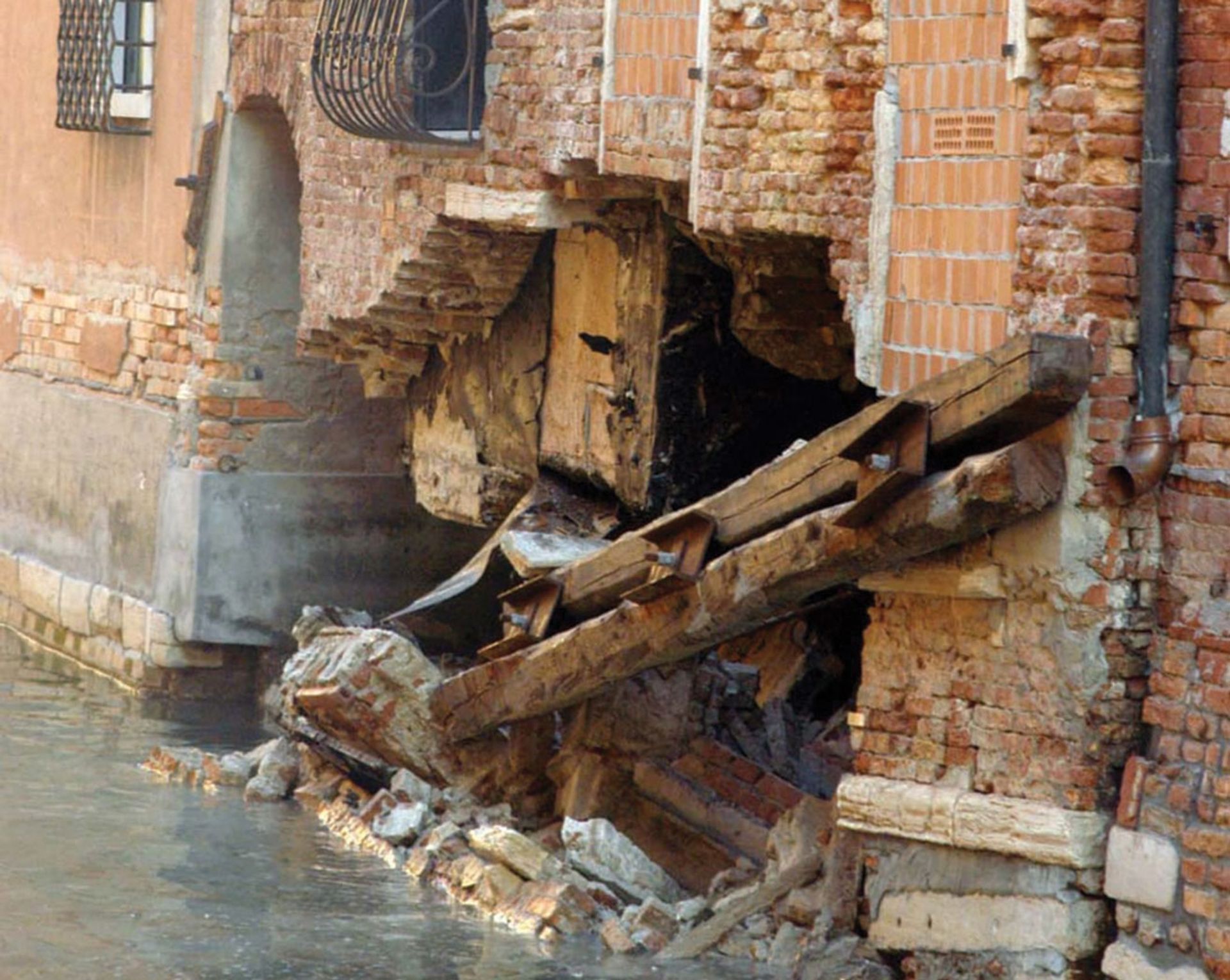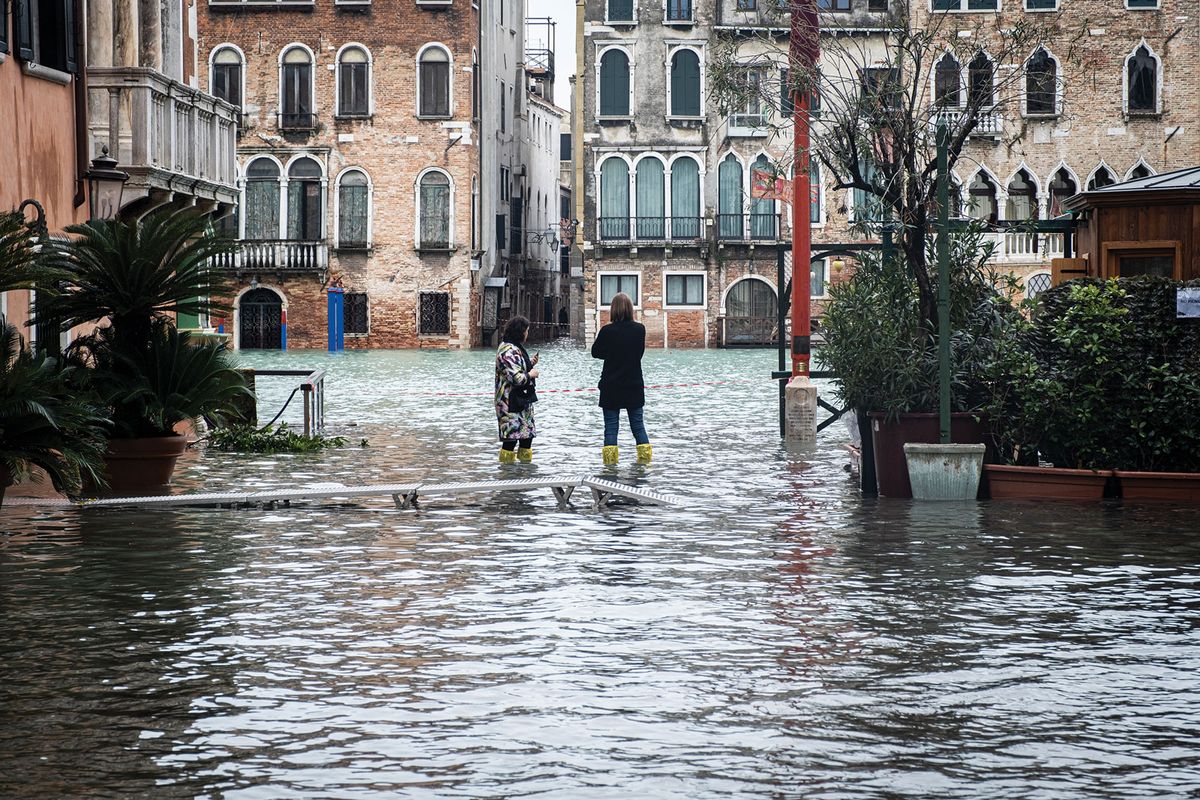1. Sea level rise: worse
Back in 2015, we asked you to notice the green algae on the steps down into the canals. This shows that most of them are covered at high tide. The relative mean water level is nearly 40cm (16 inches) higher now than in 1897 when it started to be recorded scientifically, and it is going to get much worse. In its 2021 report, the Intergovernmental Panel on Climate Change, the most authoritative body in the field, says that in its intermediate scenario of a 2.1°C-3.5°C increase in temperature—considered the most likely—the oceans will rise 44cm-76cm. It is worth noting that the Dutch, who take this all very seriously because they die if they get it wrong, are planning for a rise of 40cm-120cm. To make matters worse, Venice is also sinking by 1mm-1.5mm a year, so add on another 8cm-12cm by the end of the century.
2. Mobile flood barriers: better
Seven years ago, the flood barriers at the three entrances from the Adriatic into the lagoon were not working yet. Now they are protecting parts of the city from temporary flooding events, and the agency that has built them, the Consorzio Venezia Nuova, says that they will be effective against a 3m storm surge. But they are not the solution to the inescapable rise in the water level. Imagine Venice as a chronically sick person: the flooding events are the acute episodes that can be alleviated, but the underlying, deadly disease remains. With a 76cm rise in the mean water level, Venice would be flooded twice a day, at every high tide, which would require the lagoon to be closed off from the Adriatic. But without the tidal exchange of water with the sea, the lagoon would turn into a stinking swamp. No one knows yet what the solution might be because there is no team of hydrologists, ecologists and engineers working on it. A very few articles have appeared in scientific journals and the local press, but otherwise the media are silent.

The constant sea level rise is eating away at buildings in the city, resulting in collapse, such as this house near San Barnaba in 2003 Matteo Tagliapietra, Interpress Agency
3. The raised water level is already rotting the fabric of the city: worse
Venice will not disappear like Atlantis; it will rot and fall down. The water level has already overtopped the relatively impermeable stone bases of most buildings and is being absorbed into the porous bricks, fragmenting them and washing away the mortar. The damp has reached the upper floors and is rusting through the iron tie-bars that hold the houses together. This is unprecedented in the history of the city and will worsen rapidly as the water rises. Specialists like Mario Piana, who occupies the ancient position of Proto, architect in charge of St Mark’s Basilica, has been saying this for years, but as with all of the city’s long-term problems, no decision-maker is listening.
4. Nobody’s in charge, so there is no plan: no change
Seven years ago, we described how responsibility for Venice and its lagoon is split between too many bodies—local, regional and national—with little coordination between them. This is still the case. Without even counting their subordinate organisations, four ministries in Rome and nine comuni (town councils) have greater or lesser, but separate, roles in policymaking and execution. For example, the mayor has authority over all the canals within the city, except for the Giudecca canal through Venice, which comes under the Venice port authority, which in turn is under the ministry of infrastructures in Rome. Astonishingly, there is still no authority at national or local level with responsibility for the overall protection of the city and the lagoon. The comitatone (big committee), which meets in Rome every now and again to vote on exceptional expenditure, is in no sense a strategy-making body.
5. Unesco has abandoned Venice: worse
The World Monuments Fund made Venice a World Heritage Watch site in 2013, and in 2016 Europa Nostra declared it one of the most endangered sites in Europe. These are both influential but private organisations, while the much more significant Unesco, an offshoot of the United Nations that aspires to protect the world’s most important cultural heritage, has completely failed the city. Seven years ago, it was threatening to put Venice on its list of World Heritage Sites at risk, but it has failed to do so three times under pressure from the Italian government, which considers listing it as a national humiliation. What will it take to persuade the government in Rome that without action Venice is doomed, and that it has a responsibility to the Venetians, to Italy and to the world?
• Anna Somers Cocks OBE was chairman of the Venice in Peril Fund 2000-2012


